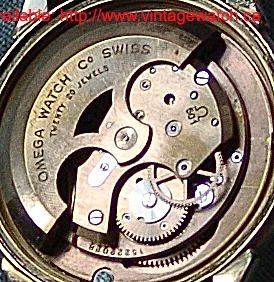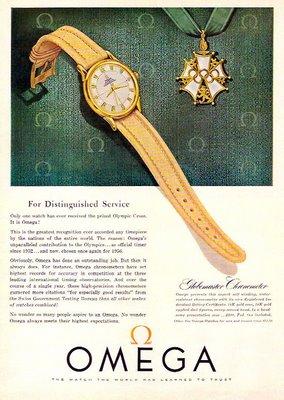
A vendor on Ebay is offering a collection of new old stock ensembles of watch case, hands, piepan dial, crown and gaskets for 1962 model Omega Constellations. On offer are dials in white or black. Not a problem there at all, as it's perfectly legitimate to offer, and indeed a godsend to be able to obtain, Omega parts through sources other than authorised dealers because ADs can be quite niggardly and pricey at times. Perfectly legit if the dials weren't fake and the case suspect, that is!
The problem doubles with those who buy these shonky ensembles: honourable horologists and dealers will do the right thing, while shonks and crooks will see it as an opportunity to scam big dollars from trusting or inexperienced Omega collectors.
Some watchmakers and dealers, maybe not knowing that the ensembles are inauthentic, will search around to find the correct movement to fit the case and will offer their watches as authentic Constellations, pointing out that the case is NOS and the movement is a serviced vintage.
Shonks and crooks will find any movement that fits, or put authentic
rotor and wheel bridges on non certified movements and offer them
as genuine NOS Connies.
This is happening now on Ebay. Some Frankenwatch bandits of the first order are putting calibre 565 movements from Omega Dynamics and Seamasters into the cases they purchased and swapping the rotor and wheel bridges to make them look authentic!
The sad thing is that people are bidding furiously for them.
Let's be very clear about this. Omega never powered any Constellation with a Calibre 565 movement. The calibre numbers in the 500 series are: 501, 503,504, and 505 for watches usually manufactured in the 1950s and 551, 561, 562 (rarer) and 564 for watches manufactured in the 1960s. Any Constellation that is powered by other 500 series movements is inauthentic and should be avoided.
The case back number of these ensembles is 14900 62 SC. This means that the case should house a movement made from 1958 to 1963. To match up to Omega specifications, the movement should have a serial number from the sixteen million to 20 million vicinity - not 15 million or 21 million. In addition, it should be a twenty-four jewel movement and have a calibre numberof 561.
The rotor bridge should have stamped "Adusted to (5) positions and
temperatures", below which should read "Twenty-four' 24 Jewels."
Anything else and the watch is a Frankenwatch and will only be worth the cost of the case ensemble.
In surveys of Ebay over time, I have discovered that often more than 50 percent of all 'authentic' Pie Pan Constellations are not kosher at all.
As the Ebay watch market has been transformed from a wholesale market mainly servicing watchmakers and dealers to a retail market connecting dealers with collectors, the number of
frauds has increased dramatically.
Over the last few days a couple of these watches have come up and I will name the dealers in the hope that they will change their listings to reflect the true status of the watches:
Listing 170020435517 - ang615ushk - has a calibre 565 movement
Listing 290019071483 - lecoultre - has a calibre 565 movement
There are quite a number of other inauthentic Constellation Pie Pans on Ebay at the moment: wrong movements for the case back numbers, wrong hands, newer movements in older cases, wrong case backs - you name it.
If you are buying an Omega Constellation watch on Ebay, buy only watches that can be confirmed as authentic by the official Omega database. Secondly, only buy from dealers who show pictures of the case back and movement. If sellers will not send you a picture of the movement and case back - don't bother with them. Never bid until you have confirmed authenticity.









